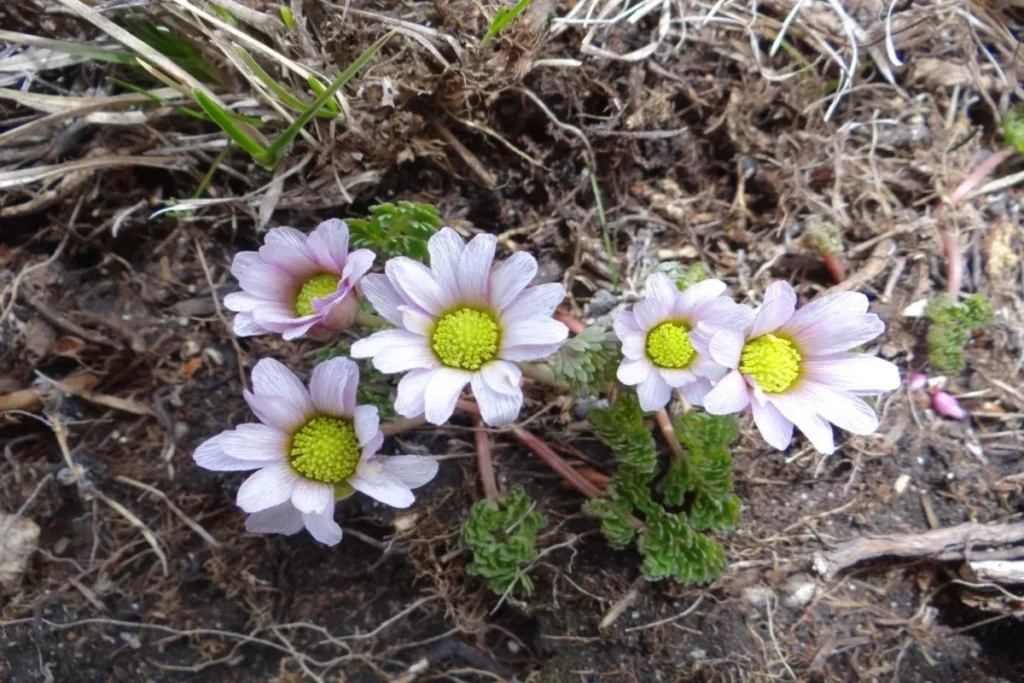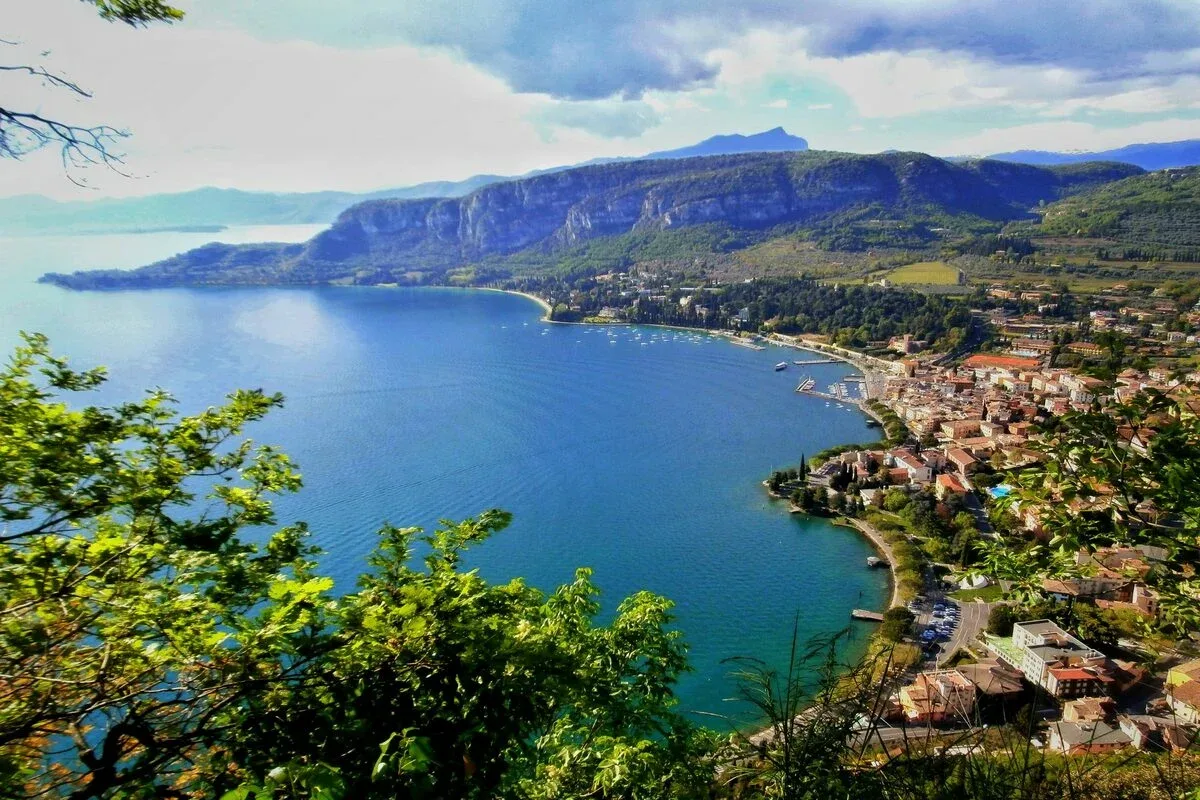Monte Baldo is one of those places that makes you wonder why it isn’t more famous. This majestic mountain massif stretches nearly 40 km along the eastern side of Lake Garda, Italy’s largest lake. It’s not a typical mountain but more of a playground of nature, history, and adventure all rolled into one.
You might think of it as just a backdrop to the delightful lake, but Monte Baldo has its own story to tell. Often called the “Garden of Europe“, it boasts an incredible variety of flora and fauna, making it a paradise for nature lovers and hikers alike. However, beyond its natural beauty, Monte Baldo is steeped in history, myths, and fascinating tales that have been passed down through generations. These stories, filled with romance, rivalry, and the voice of the wind, offer a glimpse into the region’s rich cultural tapestry.
One of the most captivating myths surrounding Monte Baldo is the belief that it is an extinct volcano… Can you believe that?! But that’s enough, I don’t want to spoil the story. So, let’s dive into some of the lesser-known quirks and curiosities that make Monte Baldo such an intriguing destination!
Legend of Monte Baldo: A Tale of Love, Envy, and Song
According to local folklore, Monte Baldo was not always the solitary, towering presence we see today. The legend begins with Lessinia, the most beautiful princess of the Alpine Kingdom, who fell deeply in love with Monte Baldo, the prince with eyes as blue as Lake Garda. Their love was pure and powerful, celebrated by all who lived in the region.

Lessinia and Monte Baldo were married in a grand ceremony organized by Father Carega, and their union brought forth three beautiful daughters: Valpolicella, Valpantena, and Val d’Illasi. These valleys, known today for their vineyards, rich landscapes, and characteristic beauty, were born from the love of these two majestic figures.
However, not everyone rejoiced in their happiness. The other princesses of the Alpine Kingdom, driven by jealousy and spite, could not bear to see Lessinia and Monte Baldo so blissfully united. Envious of the joy shared by the couple, they conspired to tear them apart. Using their powers, the jealous princesses created a deep chasm —the Val d’Adige— that forever separated Lessinia from her beloved Monte. This act of envy and malice was so powerful that it carved a permanent scar into the landscape, dividing the two lovers for all eternity.
Yet, the story does not end with their separation! Legend has it that every evening, as the sun sets over the lake, Monte Baldo sings a mournful serenade to his beloved Lessinia, his voice carried on the wind that sweeps through the valleys. The sound of his lament is said to echo through the mountains, a haunting melody that reminds all who hear it of the enduring power of love and loss. This nightly serenade is a symbol of Baldo’s undying devotion, a love song that defies time and distance, bringing a touch of magic to the landscape.
Monte Baldo, the “Volcano” That Never Was
Alright, let’s set the record straight: Monte Baldo is not a volcano, but oh boy, has that been a topic of debate! The whole volcano theory started back in the 1600s when a German philosopher, Athanasius Kircher, got his hands on some suspicious-looking rocks from Lake Garda. He took one look and declared, “Aha! These must be volcanic!” And just like that, Monte Baldo’s fiery reputation was born.

This theory gained traction when a fiery meteorite was reportedly seen crashing near the mountain during a period of significant seismic activity, leaving behind fragments of rock that smelled of sulfur. Although there was no direct evidence linking these events to volcanic activity, the dramatic occurrences provided fertile ground for the legend to take root.
Fast forward a couple of centuries, and the myth had grown legs. In 1866, when earthquakes rocked the Garda area, some French scientist suggested the tremors were caused by a new volcano forming, with Monte Baldo at the center. Local newspapers went wild with stories of lava flows and eruptions, despite, you know, no actual volcanic activity. Today, we know it’s all nonsense, but the myth is still a favorite campfire story.
Even in the early 1900s, rumors swirled about mysterious islands rising from the lake overnight, supposedly pushed up by volcanic eruptions. While that’s all good for a thriller novel, Monte Baldo remains a solid rock, a real show-off of limestone, dolomite, and other sedimentary friends. So, the next time someone tries to sell you on a “volcano tour” of Monte Baldo, just smile and enjoy the view.
Meet the Stars of Monte Baldo’s Flora
Monte Baldo is a botanical treasure trove, home to many species found nowhere else on Earth, earning it the nickname of a “botanical Noah’s Ark.” With over 43% of the Alpine flora and more than 60% of Italy’s orchids thriving in this 390 square kilometer area, it’s a paradise for plant lovers and curious explorers alike!

Monte Baldo’s flora is rich and unique. Among its many treasures, three plants stand out as exclusive to this mountain, making them true botanical celebrities: the Kerner’s Buttercup (Callianthemum kernerianum), the Bride’s Veil of Garda (Gypsophila papillosa), and the recently discovered Guenthera Repanda. Each of these plants tells a story of survival, evolution, and the exceptional conditions of Monte Baldo.
The Kerner’s Buttercup is a delicate plant, one of the few true endemics of Monte Baldo. Its habitat is restricted to the high-altitude ridges from Monte Altissimo di Nago in the north to Cresta di Naole in the south, making it extremely rare. Found only in the provinces of Verona and Trento, Kerner’s Buttercup blooms in the harsh, alpine climate, clinging to the rocky crags of the mountain as a testament to nature’s resilience.
Bride’s Veil of Garda is another rarity with a very limited distribution. The Bride’s Veil is a stenoendemic species, found in a fragmented area of just 2.5 square kilometers. It is mainly located in the municipalities of Garda, Costermano, and Torri del Benaco in the Province of Verona. With only 20 isolated populations comprising around 3,000 plants, this lovely flower is a true symbol of the fragile beauty of Monte Baldo’s ecosystem.
The star of recent botanical discoveries, Guenthera Repanda, is an extraordinary find. This non-edible, cabbage-like plant has no known relatives in Italy, making it a true enigma! Its beautiful and fragrant yellow flowers add a splash of color to the rugged landscape. Recognized by the prestigious Willdenowia of Berlin as a new endemic species, this plant was discovered by researchers from the Museo Civico di Rovereto, who have been tirelessly studying Monte Baldo’s flora for years. Their discovery highlights Monte Baldo’s ongoing role as a cradle of botanical diversity.



























